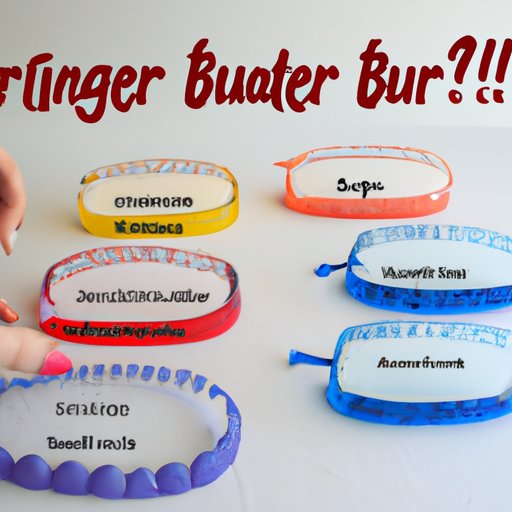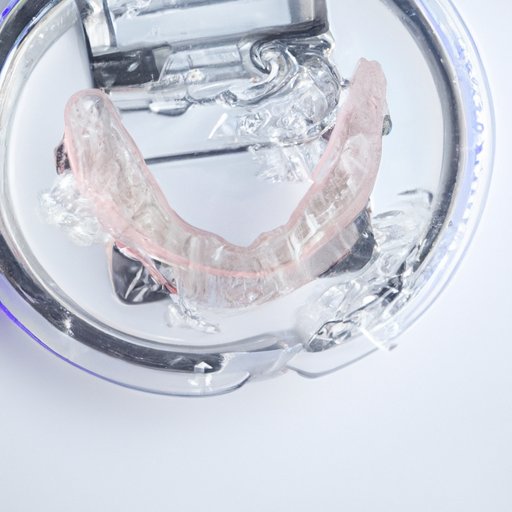Introduction
A retainer is an orthodontic device used to maintain the position of teeth after orthodontic treatment. It is typically made of plastic and metal wires that fit around the back of your teeth. Retainers are often recommended after braces or other orthodontic treatments to prevent your teeth from shifting into their original positions.
This article will explore how a retainer works, the different types of retainers available, the benefits of using a retainer, the cost of retainers, and the maintenance and care of retainers. We will also debunk some common myths about retainers so that readers can make an informed decision.

Explaining the Basics of Retainers and How They Work
Retainers work by applying gentle pressure to the teeth to keep them in the desired position. The pressure is generated by the retainer’s metal wires and plastic frame. As the teeth move, the retainer’s wires apply tension to pull the teeth back into place.
Retainers are commonly used to maintain teeth alignment after orthodontic treatment. Orthodontists may recommend wearing a retainer to keep teeth from shifting back to their original positions. Wearing a retainer helps to ensure that the teeth stay in their desired positions after orthodontic treatment.

Describing the Different Types of Retainers and Their Uses
There are two main types of retainers: fixed retainers and removable retainers. Fixed retainers are permanently affixed to the back of the teeth, usually with dental cement. This type of retainer is designed to be worn at all times and is not removable.
Removable retainers, on the other hand, can be taken out when necessary. These retainers are typically made of plastic and metal wires that fit around the back of your teeth. Removable retainers are typically worn at night while sleeping, but can also be worn during the day as needed.
In addition to these two main types of retainers, there are other types of retainers available as well. These include clear aligners, lingual retainers, and Hawley retainers. Clear aligners are similar to traditional braces but are made of clear plastic and are virtually invisible. Lingual retainers are attached to the back of the teeth, like a fixed retainer, but are hidden from view. Hawley retainers are made of acrylic and metal wires and are designed to be removable.

Examining the Benefits of Using a Retainer
Using a retainer can provide several benefits. The primary benefit is that it prevents teeth from shifting back to their original positions after orthodontic treatment. This helps to maintain the desired results of orthodontic treatment. Additionally, retainers can help to maintain proper tooth alignment by applying gentle pressure to the teeth.
Discussing the Cost of Retainers
The cost of retainers varies depending on the type of retainer and the individual’s needs. Generally, fixed retainers are more expensive than removable retainers. The cost of a retainer can range from $300 to $1,000, depending on the complexity of the retainer and the dentist’s fees. Additionally, there may be additional costs for replacing or maintaining the retainer.
Outlining the Maintenance and Care of Retainers
Proper maintenance and care of retainers is essential for ensuring that they last as long as possible. Retainers should be cleaned regularly with a mild soap and water solution. Additionally, retainers should be stored in a sealed container when not in use. It is important to replace retainers as soon as they start to become worn or damaged.
Debunking Common Myths About Retainers
There are many misconceptions about retainers. One common myth is that retainers are uncomfortable and difficult to wear. While some people may find retainers uncomfortable at first, most people quickly get used to wearing them. Additionally, some people believe that retainers are ineffective or unsafe. However, retainers are a safe and effective way to maintain proper tooth alignment.
Conclusion
In conclusion, retainers are an effective and safe way to maintain proper tooth alignment after orthodontic treatment. There are several different types of retainers available, each with its own set of benefits and drawbacks. The cost of retainers varies depending on the type and complexity of the retainer. Proper maintenance and care of retainers is essential for ensuring that they last as long as possible. Before deciding whether or not to use a retainer, it is important to discuss the options with your orthodontist.
(Note: Is this article not meeting your expectations? Do you have knowledge or insights to share? Unlock new opportunities and expand your reach by joining our authors team. Click Registration to join us and share your expertise with our readers.)
